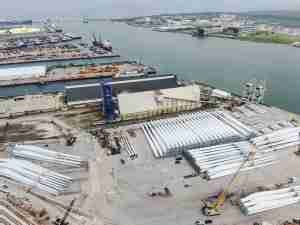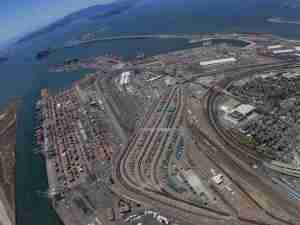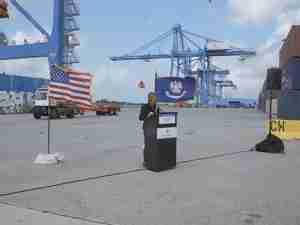The Board of Commissioners of the Port of New Orleans approved a new location for its dockside refrigerated terminal within the Uptown riverfront cargo terminal complex. Under the new relocation plan, one of the port’s terminal operators has agreed to reduce the size of its leased area to make room for a refrigerated facility.
"The Port of New Orleans is a gateway for America's goods and an economic engine for Louisiana, generating more than 160,000 jobs and $17 billion in spending statewide," said Lt. Governor Mitch Landrieu. "I'm very pleased that the Cold Storage facility is coming home and bringing good-paying jobs with it. This development allows us to move our city's economy forward and preserve our rich culture at the same time."
Under the agreement, Ports America has agreed to reduce its leased area from the Port of New Orleans by about 13.5 acres. The area includes a transit shed and open space normally used to store steel and other breakbulk commodities on the upriver end of Ports America’s footprint. That will make room for the construction 147,000 square foot refrigerated warehouse, which will be operated by New Orleans Cold Storage.
“This site was not initially available to us because the property was under long term lease. It is geared for handling international cargo and is located within the existing footprint the Uptown river terminal complex where we handle about 90% of our cargo today,” said Gary LaGrange, President and CEO of the Port of New Orleans. “Access to and from the terminal via the Port truckway will make for efficient cargo movements and keep truck traffic off neighborhood streets. Thanks to the flexibility of Ports America and New Orleans Cold Storage, we have an agreement that will benefit all parties involved,” he said.
The need to build new cold storage facility was brought about by Hurricane Katrina, which cut off waterborne access for larger deep draft vessels to the Port’s refrigerated terminal at Jourdan Road on the Industrial Canal. The closure of the Mississippi River Gulf Outlet substantially restricted access to the Jourdan Road Terminal.
Today, the only waterborne access to the Jourdan Road Terminal is through the Inner Harbor Navigation Canal Lock. Only about half of the vessels normally handled by New Orleans Cold Storage fit through the lock. Since Katrina, New Orleans Cold Storage has been forced to truck much of its cargo to docks in New Orleans along the Mississippi River to load it into ships. The additional transportation cost puts NOCS at a severe competitive disadvantage. The long term solution requires that New Orleans Cold Storage have a location on the Mississippi River, where it will have reliable, deep-draft ship access.
Sen. Mary Landrieu praised the new site and pledged her support to continue working for funding to mitigate the effects on the maritime industry of the closure of the Mississippi River Gulf Outlet.
“The $75 million Congress has already authorized at my request was a critical first step. I am committed to working with the Port to secure the remaining funding for the relocation of New Orleans Cold Storage as soon as possible,” Senator Landrieu said. “I congratulate and commend Port President Gary LaGrange and the Port Board of Commissioners on reaching today’s important decision and moving this project forward.”
For 40 years, New Orleans Cold Storage operated a refrigerated warehouse next to the site that has been identified for construction. However, that warehouse, which is now used to store coffee, was not on the waterfront and did not give the company the ability to load directly onto ships. In 2003, New Orleans Cold Storage relocated to the Jourdan Road Terminal, converting it to a dockside refrigerated terminal. With the ability to load its cargo directly from the warehouse onto ships, New Orleans’ Cold Storage’s business doubled and New Orleans became the leading port for US poultry exports.
“In many respects, we’r











